This report examines findings from phase two of the Gig Worker Learning Project, an effort of The Workers Lab and the Aspen Institute Economic Opportunities Program. The purpose of this effort is to understand more about gig work and workers directly from gig workers themselves – motivations to do gig work; challenges being faced; and solutions that would impact gig workers personally, their families, and their work. The first phase of the Gig Worker Learning Project produced an analysis of existing research and recommendations. The phase two findings presented in this latest report emerged from participatory research which included more than a dozen focus groups and several participatory analysis sessions led by an incredibly diverse set of workers. It marks the beginning of The Workers Lab’s plan to help build greater advocacy for gig workers nationally.
In late 2023, Lee Health, one of the largest public health systems in Florida, began a virtual nursing pilot designed to understand the opportunities and implications of shifting this vital role into a virtual environment. I sat down with three Lee Health leaders responsible for the design and implementation of the virtual nursing pilot — Kim Gault, MSN, RN, business system analyst for virtual health and telemedicine; Max Rousseau, supervisor of virtual health and telemedicine; and Jonathan Witenko, system director, virtual health and telemedicine — to learn more about why this was a priority for the organization, the considerations they made, and the outcomes they’re seeking. This conversation took place over two interviews and has been edited for clarity.
This interview with Mowa Haile, President of Sky Blue Builders and CEO of Apex Underground, discusses his experience and observations on the conversions of those companies to employee ownership through an Employee Stock Ownership Plan (ESOP).
Working people want more power over the terms and conditions of their work. Instead of viewing this shift as a threat or incursion, enlightened employers will find the opportunity in it. The same mechanisms that make a workplace more democratic, collaborative, and fair also can support and expand existing company priorities, from improving products and adopting new technologies to advancing diversity, equity, and inclusion efforts. While some business leaders have opted for the same tired tactics to undermine worker empowerment in favor of top-down control, a raft of innovations in worker voice, worker representation, and collaborations with labor unions offer an alternative path forward.
To help organizations apply these ideas, the Aspen Business Roundtable on Organized Labor and Charter, a media company focused on the future of work, have partnered to produce “The Shared Power Advantage: How to build a thriving company where workers have a seat at the table.” The playbook includes strategies for leaders hoping to strengthen their workplaces by empowering their employees.
In this brief, the Aspen Institute Economic Opportunities Program discusses Participatory Decision Making (PDM), including its history, the outcomes it helps create for workers and businesses, its importance in helping firms navigate technological changes and design work-based learning, and numerous examples including those from employee-owned companies.The scope of this brief is intended to help organizations working at the intersection of job quality and business competitiveness better understand how incorporating workers’ ingenuity through PDM is important for firm success and good jobs. This brief is a resource for workforce and economic development organizations, community development finance institutions, and other organizations that advise businesses or focus on or fund employer practice change, to help inform their job quality conversations and efforts with employer partners.
This profile of the North Carolina Employee Ownership Center and the Employee Ownership Expansion Network provides an overview of ongoing efforts to build infrastructure supporting the adoption of employee ownership. Focus is given to the strength of the North Carolina approach in centering racial equity, which may provide guidance for employee ownership work in other states, and on the role of state centers for employee ownership linking local actors and efforts with the national employee ownership movement. Philanthropic investors and others interested in addressing the racial wealth gap may also gain insights about how employee ownership can advance their goals.
This fact sheet, released at the 2024 Employee Ownership Ideas Forum, provides some updated statistics regarding employee stock ownership plans (ESOPs) in manufacturing in total, and, separately, for ESOPs in publicly traded corporations and closely-held corporations
In this fact sheet, released at the 2024 Employee Ownershipo Ideas Forum, the authors provide some updated statistics regarding ESOPs in rural counties with a focus on closely-held corporations where rural ESOPs are most prevalent.
This fact sheet, released at the 2024 Employee Ownership Ideas Forum, summarizes some of the latest research on employee ownership with a focus on employee stock ownership plans (ESOPs).
This fact sheet, released at the 2024 Employee Ownership Ideas Forum, examines what message types, business characteristics, and business owner characteristics influence responsiveness about employee ownership as a succession plan.
